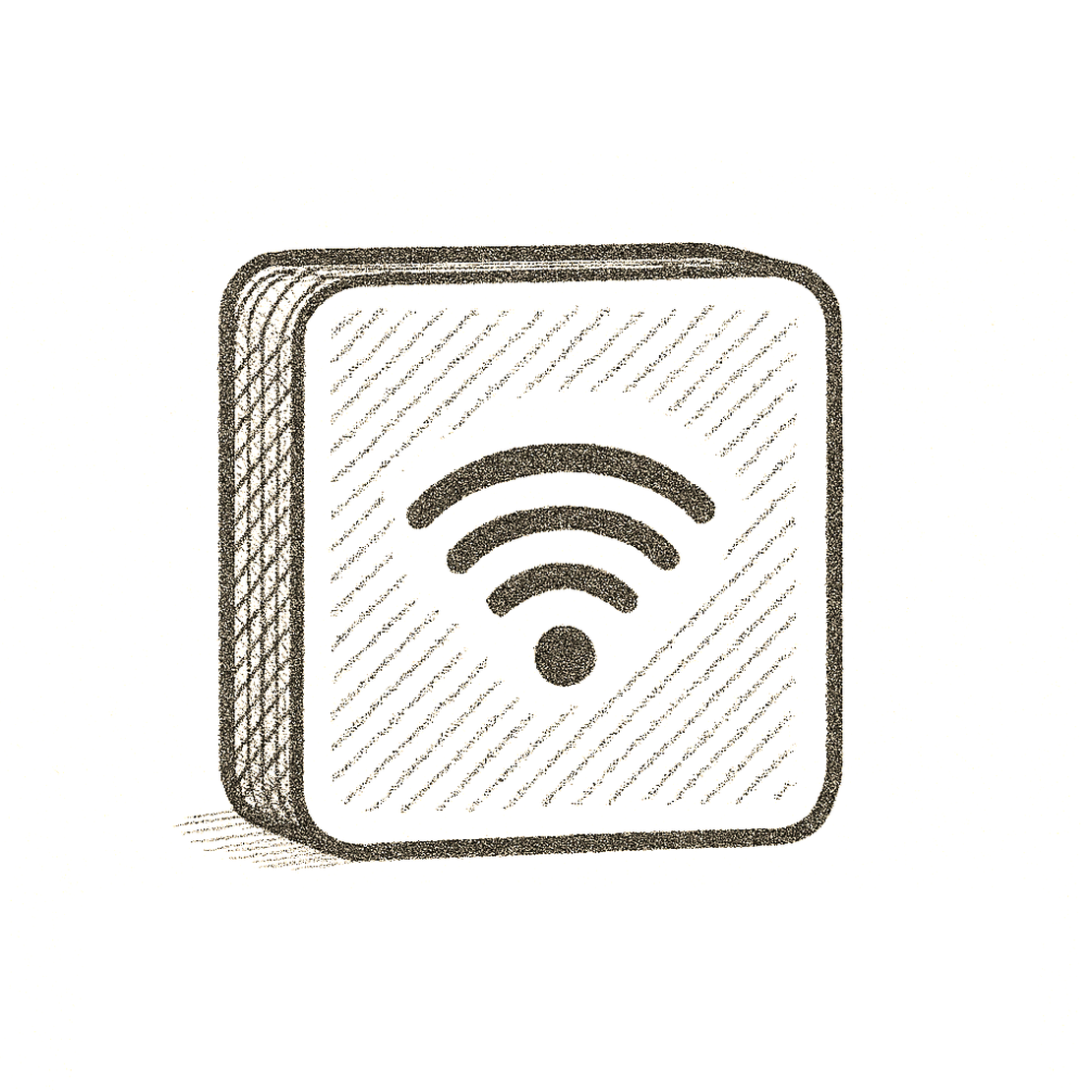
Smart Controller
How It Works?
A smart controller (or home automation hub) is a central control device that connects and coordinates multiple smart home devices — especially those using different communication protocols like Zigbee, Z-Wave, Thread, or Matter.
Think of it as the translator, orchestrator, and command center of your smart home.
🔍 What Does a Hub Do?
| Role | Description |
|---|---|
| Protocol bridge | Converts between protocols (e.g., Zigbee → Wi-Fi, Thread → HomeKit). |
| Local control | Allows automations to run without the cloud (faster, more private). |
| Automation engine | Runs schedules, scenes, routines, and conditional automations. |
| Device registry | Maintains a list of all connected devices and their states. |
| Ecosystem link | Connects devices to your smart home platform (e.g., Alexa, Google, HomeKit). |
📡 Common Supported Protocols
| Protocol | Notes |
|---|---|
| Wi-Fi | Ubiquitous but power-hungry; often doesn’t need a hub. |
| Bluetooth | Short range; often used in HomeKit or wearable integrations. |
| Zigbee | Mesh-based, low-power, great for battery sensors. Requires a hub. |
| Z-Wave | Similar to Zigbee, but proprietary. Requires a compatible hub. |
| Thread | Mesh networking designed for IoT; low-latency and low-power. Requires a border router. |
| Infrared (IR) | For controlling legacy AV gear. |
| Matter | A new unifying standard that requires a Matter controller and, often, Thread. |
🧠 Note: Many smart hubs support multiple of the above at once (e.g., Zigbee + Z-Wave + Wi-Fi).
🧠 Use Cases
Multi-protocol bridging
- Control Zigbee/Z-Wave devices from apps that only support Wi-Fi or Matter.
Reliable automation
- Run routines locally without the cloud — faster and works during outages.
Unified control
- Control everything from a single app/interface (especially in complex setups).
Privacy & security
- Keep your smart home data on your local network.
🧰 Types of Smart Hubs
| Type | Description | Examples |
|---|---|---|
| Platform hubs | Built for specific ecosystems. | HomePod, Amazon Echo, Google Nest Hub |
| Universal hubs | Support many protocols and ecosystems. | Home Assistant, Hubitat, SmartThings |
| Matter controllers | Required for Matter devices to join networks. | Apple TV, HomePod, Echo, Google Nest Hub |
| Thread border routers | Allow Thread devices to communicate with non-Thread devices. | Nanoleaf, Eve Energy, HomePod mini |
📦 Popular Smart Hubs (2025)
| Hub | Protocols | Ecosystem | Highlights |
|---|---|---|---|
| Home Assistant Yellow / Green | Zigbee, Thread (via add-on), Wi-Fi | Home Assistant | Fully local, DIY-friendly, highly customizable |
| Hubitat Elevation | Zigbee, Z-Wave, LAN | Hubitat (local) | Very fast, no cloud dependency, power users love it |
| Samsung SmartThings Station | Zigbee, Matter, Thread (2023+) | SmartThings | Mainstream hub, broad compatibility |
| Apple HomePod / Apple TV 4K | Thread, Matter, Wi-Fi, Bluetooth | HomeKit | Acts as Matter controller + Thread border router |
| Amazon Echo 4th Gen / Echo Hub | Zigbee, Matter, Thread (2024+) | Alexa | Voice + automation hub with smart display |
| Google Nest Hub (2nd Gen) | Thread, Matter | Google Home | Voice, screen, and Matter hub in one |
| Aeotec Smart Home Hub | Zigbee, Z-Wave | SmartThings | Official SmartThings hub since Samsung exited hardware |
| Athom Homey Pro (2023) | Zigbee, Z-Wave, Bluetooth, Infrared, Thread | Homey | Powerful universal hub with a nice interface |
✅ Pros and Cons
Pros
- Enables full automation and device coordination
- Bridges devices across ecosystems (e.g., Zigbee sensor → Alexa)
- Local control = faster, more reliable, more private
- Required for Zigbee, Z-Wave, and some Thread/Matter devices
Cons
- Can add complexity to your setup
- May require advanced setup (especially Home Assistant)
- Some are limited to their ecosystem (e.g., HomeKit-only hubs)
- Not all hubs support all protocols equally well
🌐 Cloud vs Local Control
| Type | Pros | Cons |
|---|---|---|
| Cloud-based | Easier setup, cross-device compatibility | Reliant on internet, potential latency, privacy concerns |
| Local control | Fast, private, works offline | More setup effort, may need advanced knowledge |
🔒 Example: Home Assistant and Hubitat prioritize local-first automation. Google Home and Alexa rely more on the cloud, though they’re improving with Matter.
🧩 How Matter Changes Hubs
Matter allows devices to talk to each other across ecosystems (Apple, Google, Amazon).
Hubs now act as Matter controllers and often also as Thread border routers.
Fewer hubs are needed over time, but:
- You still need a hub to run automations locally.
- You still need a Thread border router to support Thread devices.
🔌 How to Choose a Smart Hub
Ask yourself:
What platforms do you use?
- iPhone? Consider HomeKit + HomePod
- Alexa devices? Consider Echo with Zigbee
- Mixed ecosystems? Look at Home Assistant or SmartThings
Do you need Zigbee or Z-Wave?
- Get a hub that supports those protocols.
Do you want everything to work locally (no cloud)?
- Choose Home Assistant, Hubitat, or Homey Pro
Are you using Matter or Thread devices?
- Make sure your hub is a Matter controller and Thread border router
Comfort with setup?
- Beginners may prefer SmartThings or Apple HomeKit
- Power users will love Home Assistant or Hubitat
🧠 Bonus: Non-hub Hubs
Some devices act as partial hubs even if they’re not labeled as one:
- Philips Hue Bridge → Zigbee hub for Hue lights and motion sensors.
- Amazon Echo 4th Gen → Built-in Zigbee + Matter controller.
- Eve Energy Plug → Thread router for Apple ecosystems.
- Nanoleaf Essentials lights → Thread routers + Matter support.
Would you like a recommendation tailored to your specific setup (e.g., HomeKit with Zigbee sensors)?
| Brand / Model | Platform Support | Protocol | Power | Notable Features | Tested | Link |
|---|---|---|---|---|---|---|
| Aqara Motion P1 | HomeKit, HA | Zigbee | Battery | Small, fast, adjustable timeout | ✅ | Buy |
| Philips Hue Motion | HomeKit, Hue Bridge | Zigbee | Battery | Light sensor, good integration | ✅ | Buy |

